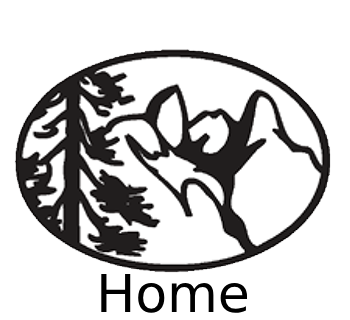
Wildlife and Birds
Wildlife
Several of the park’s animal and bird species are old-growth dependent.
Visitors are most likely to see Douglas squirrels, Northwestern chipmunks, black bears, black-tailed deer and coyotes. The tracks of weasels, martens, and snowshoe hares may be seen in winter. Other species include flying squirrels, deer mice, bushy-tailed woodrats, shrews and voles. Cougars, lynx, bobcats and mountain goats have been seen on rare occasions. Pikas may be seen in rocky areas on Black and Strachan Mountains. In 2012 one was seen near the trail up to Cabin Lake and in 2018-2019 they have been seen near ski runs.
Four amphibian species inhabit the park:
Northwestern salamander (seen in the park’s many ponds and lakes)
Redback salamander
Pacific tree frog (often heard but seldom seen), and
Tailed frog, a blue-listed (vulnerable) species.
Garter snakes are seen occasionally. Look for them in warm, dry locations such as the south side of the Fourth Lake Warming Hut. They have also been reported swimming in Yew and Fourth lakes. Alligator lizards can sometimes be seen at Hi-View and Quarry Lookouts. Please report sightings to FCPP.
Yew Lake Barrier Free Interpretive Trail Map
The Yew Lake area provides good opportunities for dragonfly/damselfly viewing, including the rare black petaltail dragonfly. In 1999, the first recorded breeding site in Canada of this rare dragonfly was found at Cypress by Vancouver Natural History Society (now Nature Vancouver) members Rex Kenner and Ian Lane.
Many species of moths and butterflies can also be seen at Cypress, including:
Anglewing
Apollo
Fritillary
Western tiger swallowtail
Birds
At least 127 bird species have been reported at Cypress, including Canada jays, sooty grouse, red‑breasted sapsuckers, northern pygmy-owls and American dippers. In 2012 a western bluebird and a Wilson’s snipe were added to the list. In 2015, red-winged blackbirds were seen at Yew Lake.
The latest bird checklist for Cypress was produced in January 2010 by Friends of Cypress and the Nature Vancouver Birding Section. Information about good birding sites in the park's southern section is included in the checklist brochure.
Hi-View and Quarry lookouts are good places to view the fall raptor migration as is Black Mountain Plateau. The Howe Sound Crest Trail is considered to be the Lower Mainland's most reliable location for seeing American three-toed woodpeckers. Red‑breasted sapsuckers frequent the Cypress Bowl area in search of thin-barked hemlocks for drilling sap-holes. Look for trees studded with small holes along the Yew Lake Trail and Old- Growth Loop. Sooty grouse may be seen along the Cypress Bowl Road and in many areas of the park. Canado jays are notorious for arriving when a lunch bag is opened, and common ravens may also keep a close eye on food sacks.
Publications:
Amphibians
Four amphibian species inhabit the park:
Northwestern salamander (commonly seen in the park’s many ponds and lakes)
Redback salamander
Pacific tree frog (often heard but seldom seen)
Tailed frog, a blue-listed (vulnerable) species.
Reptiles
Garter snakes are seen occasionally. Look for them in warm, dry locations such as the south side of the Fourth Lake Warming Hut. They have also been reported swimming in Yew and Fourth lakes.
Alligator lizards can sometimes be seen at Hi-View and Quarry Lookouts. Please report sightings to FCPP.
Insects
The Yew Lake area provides good opportunities for dragonfly/damselfly viewing, including the rare black petaltail dragonfly. In 1999, the first recorded breeding site in Canada of this rare dragonfly was found at Cypress by Vancouver Natural History Society (now Nature Vancouver) members Rex Kenner and Ian Lane.
Many species of moths and butterflies can also be seen at Cypress, including:
Anglewing (Polygonia)
Clodius Parnassian, Apollos (Parnassius clodius)
Hydaspe Fritillary (Speyeria hydaspe)
iNaturalist
We encourage the general public to use the iNaturalist app to record what they see in parks, so you will be contributing to a citizen science generated database. Take a photo, upload it to the iNaturalist app, identify the species if you can or the app may be able to help. The app also relies on photo contributions to improve the identification ability of the app.


